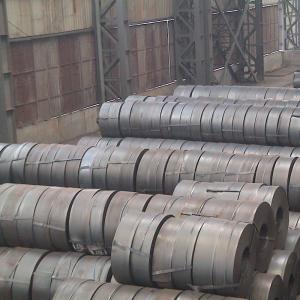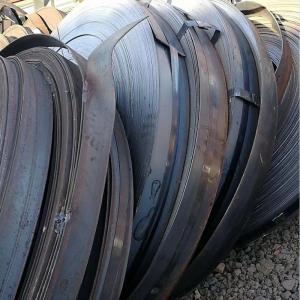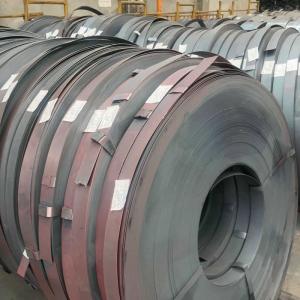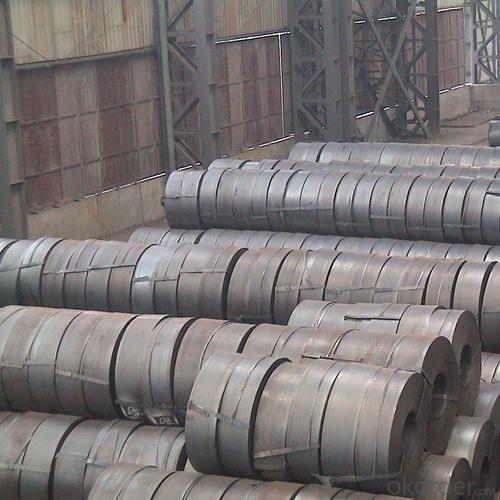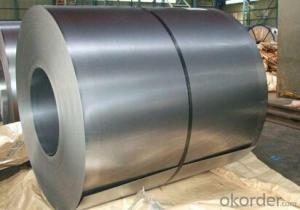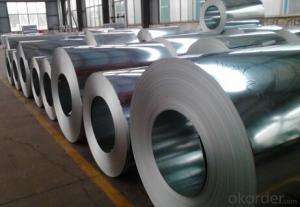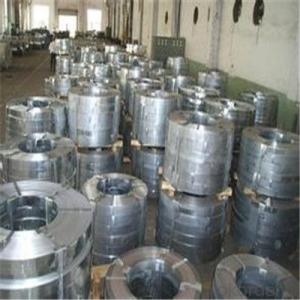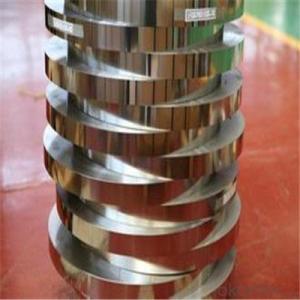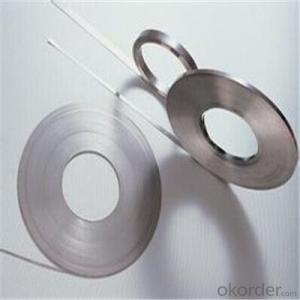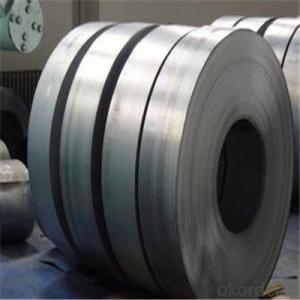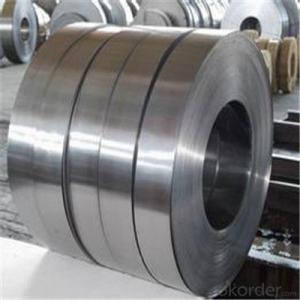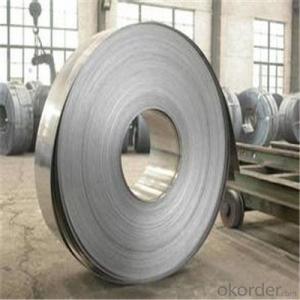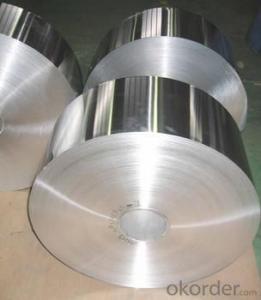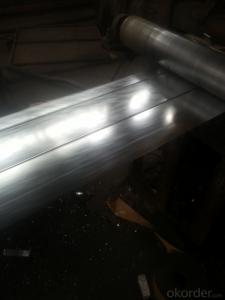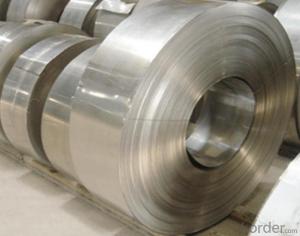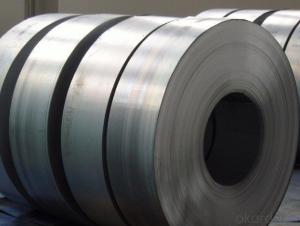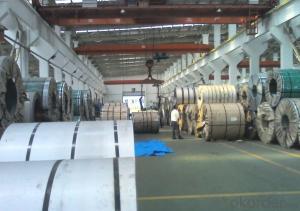Hot Rolled Steel Strip Coil Q195 Q235 in China
- Loading Port:
- Shanghai
- Payment Terms:
- TT or LC
- Min Order Qty:
- 25 m.t.
- Supply Capability:
- 1000000 m.t./month
OKorder Service Pledge
OKorder Financial Service
You Might Also Like
Specification
Applications of Steel Strip Coils:
1:Chemical industry equipment, Industrial tanks
2:Medical Instruments,Tableware, Kitchen utensil,kitchen ware
3:Architectural purpose, Milk & Food processing facilities
4:Hospital Equipment, interior Exterior decoration for building
5:Architectural purposes, escalators, kitchen ware,vehicles
Festures of Steel Strip Coils:
1. Each coil is closely covered by oil paper or plastic film.
2. Outside it is firmly packed with sack cloth or compound paper.
3. Steel strap or PP strap to pack the outside to ensure safety.
4. On/about 1000kgs to be packed with one wooden pallet.
5. Strips can be loaded to 20'FCL without pallet if required by customer.
6. LCL shipment can also be arranged once required by the customer.
Specifications of Steel Strip Coils:
| Description | Hot Rolled Steel Strip |
| Specification | 1.2-6.0mm*70mm |
| Standard | AISI, ASTM, BS, DIN, GB, JIS |
| Material | Q195,Q215,Q215B,Q235,Q235B |
| Application | Widly used in welding steel pipes, and bicycle making etc. |
| MOQ | 20 tons or according to customers’ requirement. |
| Port of Delivery | Tianjin Port of China |
| Remarks | We can provide qualify goods,competitive price and speedy delivery |
Images of Steel Strip Coils:
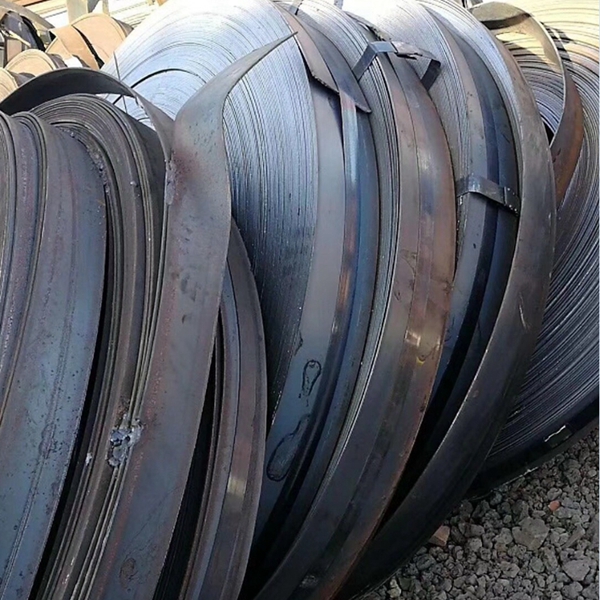
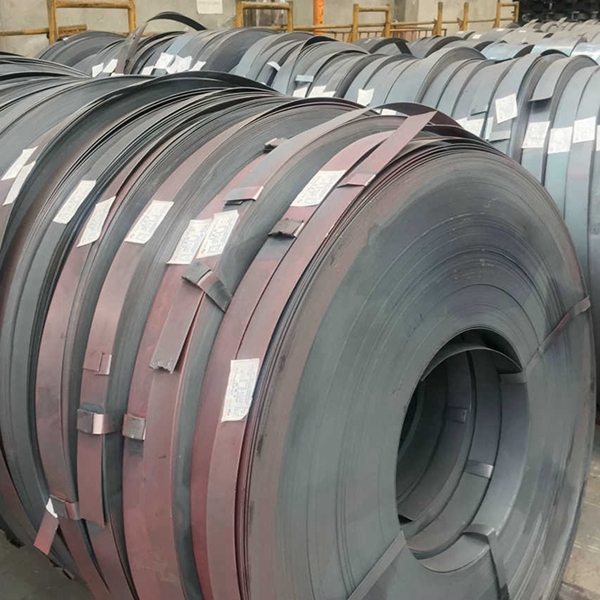
FAQ
1.What's your MOQ?
25MT, it is for one container.
2.Do you have QC teams?
Yeah, sure, our QC team is very important, they will keep the quality control for our products.
3. What's your normal delivery time?
Our delivery time about 10-20days for standard sizes, if you have other requirements like hardness and width ,it is about 20-40days.
- Q: How are steel strips used in the production of air conditioning systems?
- Steel strips are used in the production of air conditioning systems for various purposes, such as forming the structural components, creating the outer casing, and securing various internal components together.
- Q: Can steel strips be used in the manufacturing of agricultural equipment?
- Yes, steel strips can be used in the manufacturing of agricultural equipment. Steel strips provide strength, durability, and resistance to corrosion, making them suitable for various applications in agricultural machinery such as plows, cultivators, harvesters, and seeders.
- Q: What are the different methods for embossing steel strips?
- There exists a variety of techniques for embossing steel strips, each possessing its own merits and applications. 1. Roll embossing remains the most prevalent method, involving the passage of the steel strip through a series of rolls with engraved patterns. The rolls exert pressure on the strip, resulting in the desired embossed design. Industries such as automotive, construction, and decorative applications widely employ roll embossing. 2. Heat embossing entails heating the steel strip before pressing it onto a patterned die. The heat softens the metal, enabling it to conform to the shape of the die. Heat embossing is particularly advantageous for intricate or elaborate designs that prove challenging to achieve through roll embossing. 3. Laser embossing represents a non-contact approach, utilizing a laser beam to create the embossed pattern on the steel strip. The laser selectively removes material from the surface, generating the desired design. Laser embossing offers remarkable precision and flexibility, rendering it suitable for complex and customized patterns. 4. Press embossing, also referred to as stamping, necessitates the use of a hydraulic or mechanical press to exert force on the steel strip against a die. The die possesses the desired engraved pattern, and the pressure from the press transfers the pattern onto the strip. Press embossing finds common usage in large-scale production and facilitates deep and uniform embossing. 5. Photochemical etching involves the application of a photoresist onto the steel strip, followed by exposure to ultraviolet light through a patterned mask. The exposed areas are chemically etched away, leaving behind the embossed design on the strip. Photochemical etching permits intricate patterns and is frequently employed for decorative or artistic purposes. Each method exhibits its own advantages and limitations, with the selection of a particular technique dependent on factors such as the desired design, production volume, precision requirements, and cost considerations.
- Q: Can steel strips be used in the production of kitchen appliances?
- Yes, steel strips can be used in the production of kitchen appliances. Steel is a commonly used material in the manufacturing of kitchen appliances due to its durability, strength, and resistance to corrosion. Steel strips can be used for various components and parts of kitchen appliances such as the body, frame, shelves, handles, or even internal mechanisms. The use of steel strips in kitchen appliances ensures longevity, stability, and a sleek appearance. Additionally, steel is easy to clean and maintain, making it a practical choice for kitchen appliances that are exposed to heat, moisture, and frequent use.
- Q: What are the common applications of steel strips in construction?
- Steel strips are commonly used in construction for a variety of applications. They are often used as reinforcement in concrete structures, such as in beams, columns, and slabs, to provide added strength and support. Steel strips are also frequently used for framing and support in walls, roofs, and ceilings. Additionally, they can be used for cladding, providing a durable and aesthetically pleasing exterior finish. Overall, steel strips are versatile and widely utilized in construction for their strength, durability, and ability to withstand various environmental conditions.
- Q: Can steel strips be used for making watch straps?
- Watch straps can indeed be made from steel strips. Steel is known for its durability and strength, making it capable of withstanding the rigors of daily use. Its resistance to corrosion also makes it ideal for long-term wear. Both men and women appreciate the sleek and contemporary look of steel watch straps. Moreover, steel can be molded effortlessly into various sizes and designs, offering a wide range of strap styles. Ultimately, steel strips are a dependable option for producing watch straps that blend endurance, fashion, and practicality.
- Q: What are the common dimensions for steel strips?
- The common dimensions for steel strips vary depending on their intended use, but they typically range in thickness from 0.1mm to 5mm and in width from 10mm to 500mm. However, these dimensions can be customized to meet specific requirements in various industries.
- Q: What are the common surface treatments for steel strips?
- There are several common surface treatments for steel strips that are used to enhance their appearance, protect against corrosion, or improve their performance. These treatments include: 1. Hot-dip galvanizing: This process involves immersing the steel strip in a bath of molten zinc, which forms a protective coating on the surface. It provides excellent corrosion resistance and can extend the lifespan of the steel strip. 2. Electro-galvanizing: Similar to hot-dip galvanizing, this method involves applying a layer of zinc to the steel strip through an electrolytic process. It offers good corrosion resistance and is often used for thinner steel strips. 3. Electroplating: This treatment involves coating the steel strip with a thin layer of a different metal, such as chrome or nickel, through an electrochemical process. It can enhance the aesthetics of the steel strip and provide additional corrosion resistance. 4. Phosphating: This process involves treating the steel strip with a phosphoric acid solution, which converts the surface into a layer of phosphate crystals. Phosphating improves the adhesion of subsequent coatings and provides corrosion resistance. 5. Painting or powder coating: Applying a layer of paint or powder coating onto the surface of the steel strip can enhance its appearance, provide corrosion resistance, and improve durability. These coatings can be customized with various colors and finishes. 6. Passivation: This treatment involves treating the steel strip with an acid solution to remove impurities and create a passive oxide layer on the surface. Passivation improves corrosion resistance and is commonly used for stainless steel strips. 7. Pickling: This process involves immersing the steel strip in an acid solution to remove surface impurities, such as rust or scale. Pickling can improve the surface finish and prepare the steel strip for subsequent treatments or coatings. These surface treatments for steel strips are often chosen based on the desired level of corrosion resistance, appearance, and specific application requirements. Different industries and applications may require specific treatments to ensure the steel strips perform optimally in their intended use.
- Q: How are steel strips used in the manufacturing of hydraulic systems?
- Steel strips are used in the manufacturing of hydraulic systems for various purposes such as forming rigid structures, providing strength and durability, and facilitating the movement of hydraulic fluid through the system.
- Q: How are steel strips packaged for shipment?
- Steel strips are typically packaged for shipment in a variety of ways to ensure their safety and ease of transportation. The packaging methods may vary depending on the specific requirements and dimensions of the steel strips. One common method of packaging steel strips is by using wooden crates or skids. The strips are stacked together and then securely fastened to the crates or skids to prevent any movement during transportation. This helps to minimize the risk of damage or deformation that may occur during shipment. In addition to wooden crates or skids, steel strips can also be packaged using steel or plastic strapping. Strapping is tightly wound around the stacked strips, creating a secure bundle. This method is particularly useful for smaller or narrower strips that may not require the use of crates or skids. To protect the steel strips from moisture or corrosion, they can also be packaged using protective materials such as plastic wrap or shrink wrap. This wrapping helps to create a barrier, preventing any contact with moisture or other external elements that may cause damage. Labels and markings are typically applied to the packaging to provide important information such as the type of steel, dimensions, quantity, and handling instructions. This helps to ensure that the steel strips are handled correctly throughout the shipment process. Overall, steel strips are packaged for shipment in a manner that prioritizes their protection and safe transportation. The specific packaging method used may depend on factors such as the size, quantity, and nature of the steel strips, as well as any specific requirements or regulations set by the shipping company or destination.
Send your message to us
Hot Rolled Steel Strip Coil Q195 Q235 in China
- Loading Port:
- Shanghai
- Payment Terms:
- TT or LC
- Min Order Qty:
- 25 m.t.
- Supply Capability:
- 1000000 m.t./month
OKorder Service Pledge
OKorder Financial Service
Similar products
Hot products
Hot Searches
Related keywords
